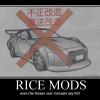Billet Girdle
Announcements
-
Similar Content
-
Latest Posts
-
By joshuaho96 · Posted
You have to continuously fill it to avoid dry running. Personally the transmissions I've serviced have never been bad enough to justify doing this because it is definitely a pretty complicated and somewhat risky procedure compared to simply draining the pan, measuring what came out, then refilling with the exact same amount. -
So...I thought about that (muuuuuch easier!) but I wasn't confident running the pump dry by doing that....is it safe?
-
By joshuaho96 · Posted
I did basically the same procedure on a ZF6HP but the reason to pull the valve body is to replace the seals between the valve body and the transmission which are notorious for leaking pressure with age causing poor shifting and burning out the clutches. If you just wanted to exchange all the fluid you should be able to undo one of the transmission cooler return lines to drain into a bucket while using the pressure filler to keep it topped off.


Recommended Posts
Create an account or sign in to comment
You need to be a member in order to leave a comment
Create an account
Sign up for a new account in our community. It's easy!
Register a new accountSign in
Already have an account? Sign in here.
Sign In Now